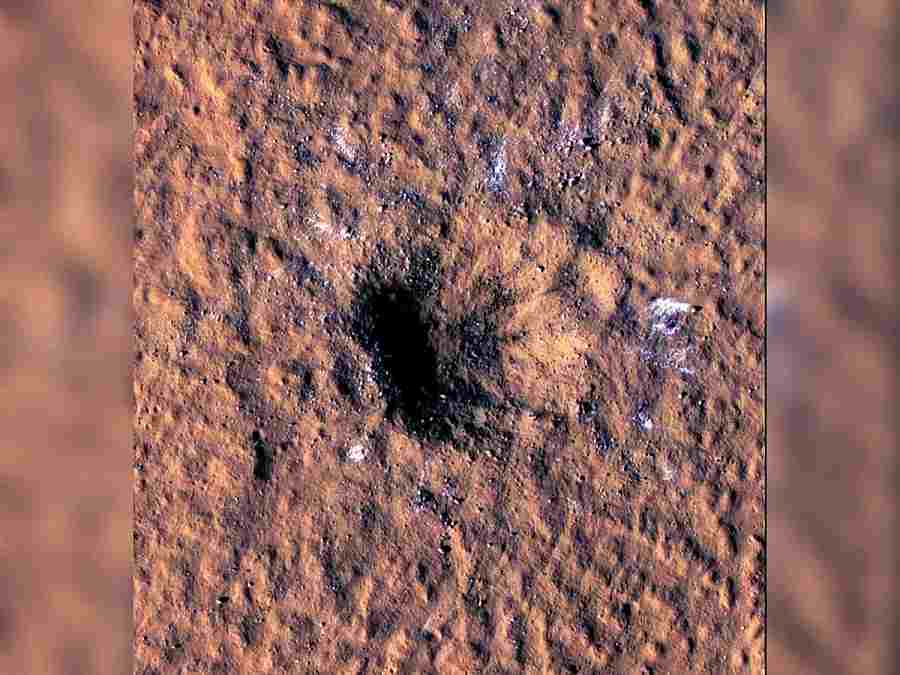Mon 21 October 2024:
Microbes could find a potential home beneath frozen water on the Martian surface, according to a new study published on Thursday.
Mars has two kinds of ice: frozen water and frozen carbon dioxide. The new study, published in Nature Communications Earth & Environment, looked at water ice, large amounts of which formed from snow mixed with dust that fell on the surface during a series of Martian ice ages in the past million years.
Through computer modeling, researchers found that the amount of sunlight that can shine through water ice would be enough for photosynthesis to occur in shallow pools of meltwater below the surface of that ice. Similar pools of water that form within ice on Earth have been found to teem with life, including algae, fungi, and microscopic cyanobacteria, all of which derive energy from photosynthesis.
“If we’re trying to find life anywhere in the universe today, Martian ice exposures are probably one of the most accessible places we should be looking,” said the study’s lead author, Aditya Khuller of NASA’s Jet Propulsion Laboratory in Southern California.
__________________________________________________________________________

https://whatsapp.com/channel/0029VaAtNxX8fewmiFmN7N22
__________________________________________________________________________
Key Discoveries and Ongoing Research
Over the past few decades, scientists have gathered compelling evidence of water on Mars, suggesting the Red Planet once had liquid water and potentially conditions suitable for life. Early missions, like NASA’s Mars Odyssey in 2001, detected signs of water ice beneath the surface. Later, the Phoenix Lander in 2008 confirmed the presence of frozen water in the Martian soil.
The discovery of recurring slope lineae (RSL) by the Mars Reconnaissance Orbiter in 2011 provided hints of seasonal liquid water flows, though recent studies suggest these could be salt-based flows rather than pure water. Additionally, in 2018, the European Space Agency’s Mars Express found a subglacial lake beneath the planet’s southern polar ice cap, sparking renewed interest in the search for life.
Current missions like NASA’s Perseverance Rover are exploring ancient lake beds, particularly in Jezero Crater, searching for signs of past water and possible microbial life. Research continues to focus on understanding Mars’ water history, including where it went and how it may still exist underground, offering hope for future human exploration and the possibility of life beyond Earth.
SOURCE: INDEPENDENT PRESS AND NEWS AGENCIES
______________________________________________________________
FOLLOW INDEPENDENT PRESS:
WhatsApp CHANNEL
https://whatsapp.com/channel/0029VaAtNxX8fewmiFmN7N22
![]()
TWITTER (CLICK HERE)
https://twitter.com/IpIndependent
FACEBOOK (CLICK HERE)
https://web.facebook.com/ipindependent
YOUTUBE (CLICK HERE)
https://www.youtube.com/@ipindependent
Think your friends would be interested? Share this story!





